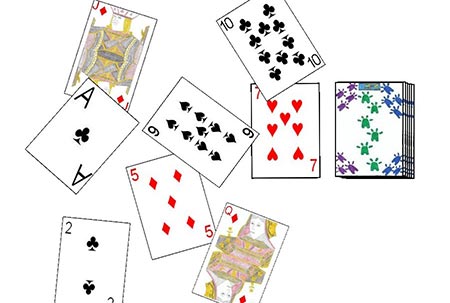How do you play Indian rummy?
Views: 1491 Update date: May 21,2024
The Indian rummy game is a classic card game that is deeply ingrained in the culture of many households and gatherings. Known for its blend of skill, strategy, and luck, Indian rummy has captivated players for generations.
Indian rummy is a card game where the objective is to form valid sequences and sets from the cards dealt to each player. It is typically played with 2-6 players and uses one or two standard decks of cards, including jokers.
Players: The game accommodates 2-6 players.
Cards Dealt: Each player receives 13 cards.
For 5-6 players, two decks are used.
Each player is dealt 13 cards.
Pure Sequence: A sequence without any jokers.
Impure Sequence: A sequence that includes one or more jokers.
Set: A set consists of three or four cards of the same rank but different suits.
Players take turns drawing a card from either the draw pile or the discard pile and discarding a card from their hand.
The game continues until a player makes a valid declaration by arranging all cards into sequences and sets.
Pure Sequence: A sequence without jokers.
Impure Sequence: A sequence with jokers.
Set: A group of three or four cards of the same rank and different suits.
Joker: A wildcard that can substitute for any other card to form sequences or sets.
Indian rummy is a card game where the objective is to form valid sequences and sets from the cards dealt to each player. It is typically played with 2-6 players and uses one or two standard decks of cards, including jokers.
Key Components
Decks: Indian rummy is played with two standard decks of 52 cards each, along with jokers.Players: The game accommodates 2-6 players.
Cards Dealt: Each player receives 13 cards.
Basic Rules of Indian Rummy
1. Objective of the Game
The main goal in Indian rummy is to arrange all 13 cards into valid sequences and sets. A valid declaration must include at least two sequences, one of which must be a pure sequence (without jokers).2. Dealing Cards
For a game with 2-4 players, a single deck of 52 cards plus jokers is used.For 5-6 players, two decks are used.
Each player is dealt 13 cards.
3. Forming Sequences and Sets
Sequence: A sequence is a group of three or more consecutive cards of the same suit. Sequences can be pure or impure.Pure Sequence: A sequence without any jokers.
Impure Sequence: A sequence that includes one or more jokers.
Set: A set consists of three or four cards of the same rank but different suits.
4. Gameplay
The game begins with the player to the left of the dealer.Players take turns drawing a card from either the draw pile or the discard pile and discarding a card from their hand.
The game continues until a player makes a valid declaration by arranging all cards into sequences and sets.
5. Winning the Game
A player wins by making a valid declaration.Points are calculated based on the unarranged cards in the opponent's hands, with the player having the lowest points declared the winner.

Strategic Tips for Indian Rummy
1. Prioritize Forming a Pure Sequence
Focus on creating a pure sequence early in the game to meet the basic requirement for a valid declaration.2. Monitor Opponents' Moves
Keep an eye on the cards your opponents pick and discard. This can provide insight into their strategy and help you avoid discarding cards they need.3. Optimal Use of Jokers
Jokers are versatile and can complete sets and impure sequences. Use them wisely to maximize your hand's potential.4. Discard High-Value Cards
If you cannot use high-value cards (10, Jack, Queen, King) to form sequences early, discard them to minimize your point burden if an opponent declares.Glossary of Important Terms
Sequence: A consecutive arrangement of three or more cards of the same suit.Pure Sequence: A sequence without jokers.
Impure Sequence: A sequence with jokers.
Set: A group of three or four cards of the same rank and different suits.
Joker: A wildcard that can substitute for any other card to form sequences or sets.
